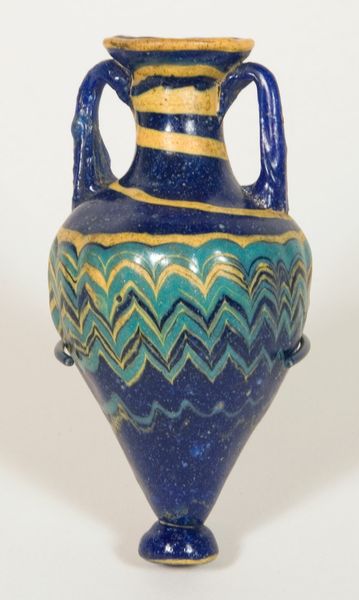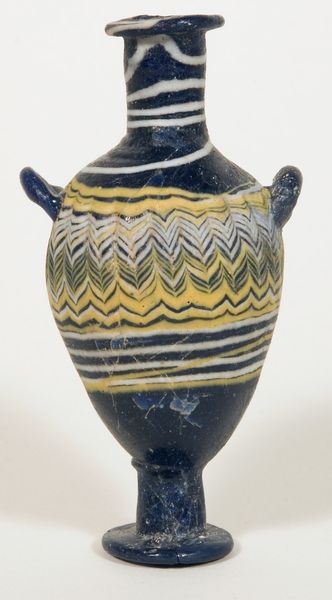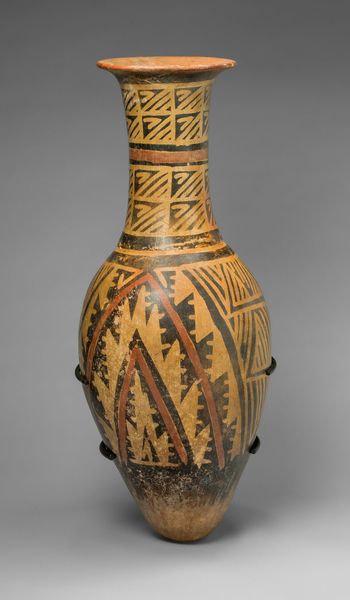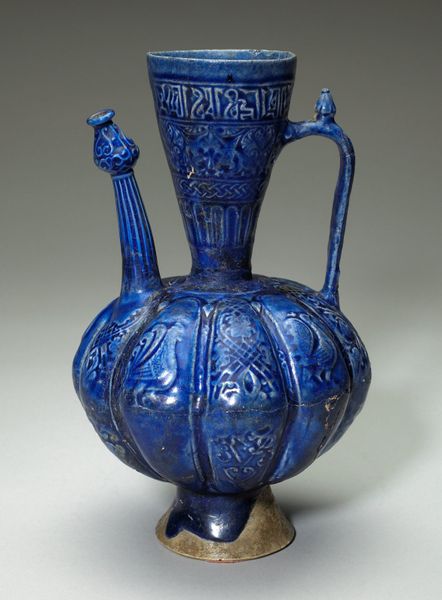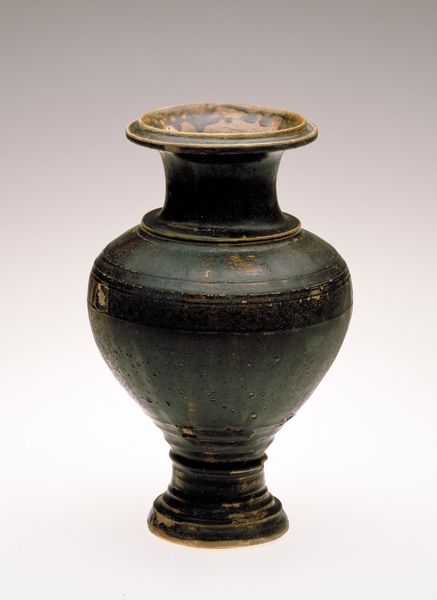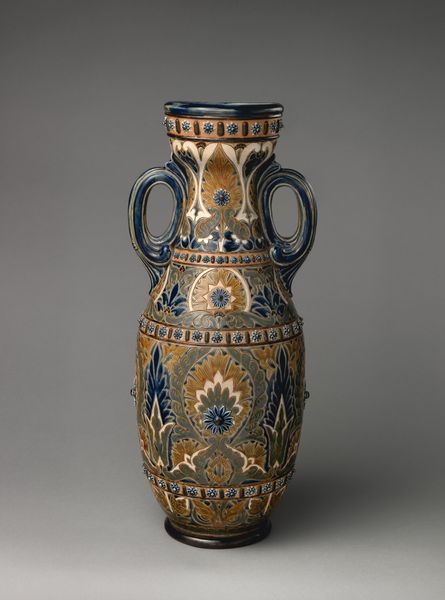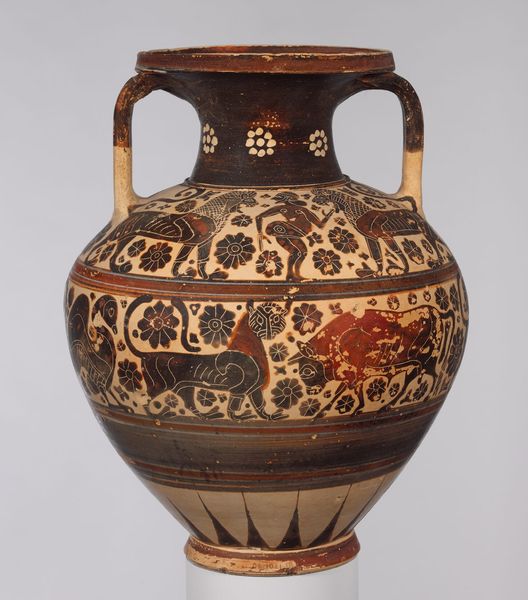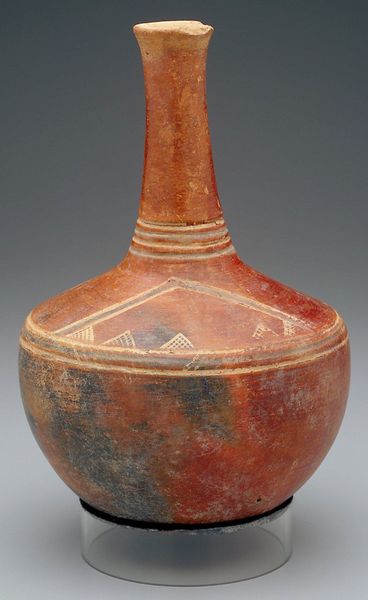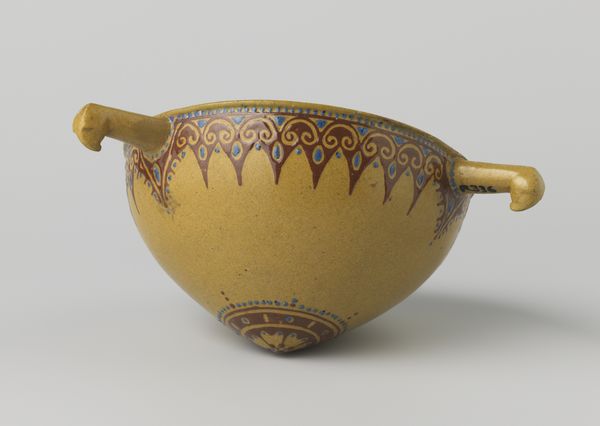
Amphoriskos (Container for Oil) c. late to early 6th century
0:00
0:00
ceramic, glass
#
ceramic
#
glass
#
vessel
#
geometric
#
ancient-mediterranean
#
ceramic
#
abstraction
#
islamic-art
Dimensions: 8.1 × 4.8 × 4.8 cm (3 3/16 × 1 7/8 × 1 7/8 in.)
Copyright: Public Domain
Curator: Let's discuss this striking little vessel from the late 6th to early 5th century BCE, entitled "Amphoriskos (Container for Oil)." It resides here at the Art Institute of Chicago. What is your initial read on this petite artwork? Editor: The deep blue and yellow contrast is quite stunning, as is the meticulous geometric patterning. It looks almost jewel-like. There's an unexpected formality in its diminutive size. Curator: Exactly. Though small, its cultural footprint looms large. Objects like this were commodities within intricate trade networks, revealing class and access within early Mediterranean societies. The glass itself— where did it come from, who made it, for whom? Editor: Considering the surface design, those precise chevron bands appear deliberately structured and layered, and I wonder about the symmetry dictated by function versus abstract ideals from the culture. It creates an optical rhythm that both contains and expands the form. Curator: Yes! Because when we look closely, there's a deliberate artistic intention behind what could have been merely functional choices. Were such objects intended to be merely beautiful or to speak silently about the values of its possessors? Editor: I suppose a bit of both. This period was ripe for experimentation, where a vessel can also carry symbolic weight. Did the oil it contain represent something significant? Curator: Perhaps sacred rituals? It is hard to state precisely what any Ancient object specifically symbolized without more material evidence and context of its archaeological discovery, though its elegance speaks volumes about social history of access and power. Editor: So true. Returning to the glass itself, the way the colors interact reveals layers and light as well. Curator: Exactly. Its elegance reminds us of both form and function. I think approaching this little amphoriskos, as beautiful as it is, must take into account what its presence then—and now—connotes in light of art history and society. Editor: I see what you mean. Well, looking at it through a purely structural perspective, I'm more appreciative now, after your discussion of how cultural context shapes this artwork. It has changed my eye to the form itself.
Comments
No comments
Be the first to comment and join the conversation on the ultimate creative platform.
